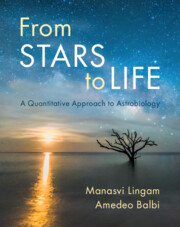Book contents
- Frontmatter
- Dedication
- Contents
- Preface
- Part I Astronomical Origins
- 1 The Foundations of Astrobiology
- 2 From the Big Bang to Molecules
- 3 Planet Formation and Migration
- Part II Earth
- Part III Habitability
- Part IV Astrobiological Targets
- Part V Detecting Life
- Part VI Futures
- References
- Author index
- Subject index
2 - From the Big Bang to Molecules
from Part I - Astronomical Origins
Published online by Cambridge University Press: 22 November 2024
- Frontmatter
- Dedication
- Contents
- Preface
- Part I Astronomical Origins
- 1 The Foundations of Astrobiology
- 2 From the Big Bang to Molecules
- 3 Planet Formation and Migration
- Part II Earth
- Part III Habitability
- Part IV Astrobiological Targets
- Part V Detecting Life
- Part VI Futures
- References
- Author index
- Subject index
Summary
The physics and chemistry underpinning the origins of the Universe, stars, elements, and molecules is described in this chapter. It begins with outlining our understanding of the Big Bang, and how gravity subsequently facilitated the emergence of order and complexity in the Universe. This is followed by a brief exposition of star formation, stellar evolution of low- and high-mass stars, and the multiple pathways responsible for the production of elements in stars (i.e., stellar nucleosynthesis) such as the triple alpha process. The chapter concludes with an introduction to the broad subject of astrochemistry. The emphasis is on delineating the sites of molecule formation (e.g., molecular clouds), as well as the processes involved in gas-phase chemistry and grain-surface chemistry that drive the synthesis of molecules.
Keywords
- Type
- Chapter
- Information
- From Stars to LifeA Quantitative Approach to Astrobiology, pp. 13 - 36Publisher: Cambridge University PressPrint publication year: 2024

